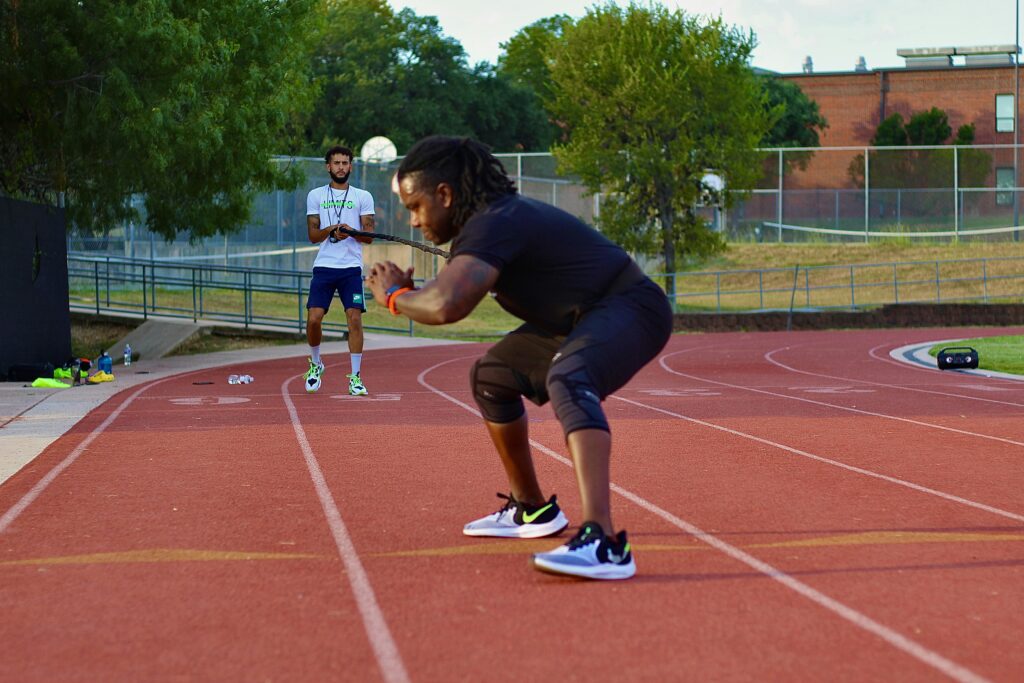
Coaches play a vital role in safeguarding athletes while helping them achieve their full potential. Injuries can severely impact performance, leading to prolonged recovery times and setbacks. A proactive strategy that includes structured conditioning, proper training techniques, and awareness of fatigue helps minimize these risks.
By fostering a secure training environment and recognizing early warning signs, coaches can protect athletes from avoidable injuries. Furthermore, understanding the legal aspects of injury management ensures responsible coaching practices. In this article, we’ll explore strategies that help coaches enhance athlete safety, minimize injuries, and promote overall well-being during training and competitions.
Understanding Common Sports Injuries
A thorough understanding of frequent sports injuries allows coaches to implement effective preventive strategies. Sprains, strains, fractures, and concussions are often caused by poor technique, repetitive stress, or inadequate warm-ups.
The National Council of Youth Sports cites that over 50% of youth sports injuries are preventable with proper precautions. Improved training techniques, conditioning, and adequate recovery time help minimize avoidable injuries significantly. Annually, 3.5 million young athletes experience sports-related injuries, with one-third requiring medical attention, stressing prevention’s importance.
Educating athletes on early signs like persistent discomfort or restricted movement helps prevent minor injuries from escalating into more serious conditions.
Emphasizing Proper Training Techniques
The correct technique reduces injury risks, so coaches must emphasize precise movement patterns to enhance athlete safety and performance during training sessions. Poor form stresses muscles and joints, increasing strains and sprains.
Regular observation and feedback ensure athletes execute drills correctly, refining techniques for long-term injury prevention and effectiveness.
SpringerOpen states that Injury Prevention Exercise Programs (IPEPs) show 91% adherence, reducing injury risks significantly in sports. However, pain during training discourages participation, affecting effectiveness. Providing diverse resources and addressing discomfort improves adherence. Structured training methods are essential for minimizing preventable injuries and ensuring long-term athlete safety and performance.
What role does biomechanics play in injury prevention?
Biomechanics evaluates how the body moves, helping to minimize injury risks by promoting efficient movement patterns. Proper posture, alignment, and joint stability reduce excessive strain on muscles and ligaments. Coaches and trainers use biomechanical assessments to refine techniques, prevent overuse injuries, and enhance performance.
Implementing Strength and Conditioning Programs
A well-rounded strength and conditioning regimen is key to improving endurance, flexibility, and muscular stability, which are the three crucial factors in injury prevention. Strength training reduces injury risk across sports by improving muscle stability, joint function, and biomechanics.
To maximize these benefits, coaches should design training programs that strengthen major muscle groups evenly, preventing imbalances that may lead to injuries. Resistance training reinforces joint stability while flexibility exercises improve mobility and reduce stiffness.
Ensuring a Safe Training Environment
Maintaining a hazard-free training space is fundamental to minimizing injury risks. Coaches should conduct regular inspections of playing surfaces, ensuring they remain clean, even, and free from obstructions.
The National Athletic Trainers’ Association reports that environmental factors like surface type, weather, and equipment quality significantly influence sports injuries, including concussions. Although studies show no conclusive link between surface type or location, wet conditions may lower concussion risks. Properly maintained protective gear, including footwear, helmets, and pads, enhances athlete safety.
Staying hydrated and scheduling rest breaks prevent exhaustion-related injuries, particularly in high-intensity sports. Moreover, incorporating detailed environmental data in injury reporting can help identify potential risk factors more effectively.
Recognizing Overtraining and Fatigue
Pushing athletes too hard without sufficient recovery time leads to fatigue-related injuries such as muscle strains and stress fractures. Coaches must monitor training intensity and ensure athletes receive adequate rest between sessions to prevent these risks.
According to MDPI, wearable technology devices detect overtraining by monitoring biometric indicators like heart rate variability, sleep patterns, and neuromuscular responses. These devices assess internal and external training loads, identifying metabolic fatigue and optimizing recovery. Their effective use enhances injury prevention, supports rehabilitation, and significantly improves overall athlete performance and well-being.
Warning signs of overtraining include persistent soreness, reduced stamina, and decreased performance. By leveraging WT data, coaches can recognize these indicators early and make necessary training adjustments.
How does mental fatigue impact physical injury risks?
Mental fatigue impairs concentration, reflexes, and decision-making, increasing the likelihood of mistakes that lead to injuries. When athletes experience cognitive exhaustion, they may react slower, misjudge movements, or adopt poor technique. This places additional stress on muscles and joints, raising injury risks. Proper rest, mental resilience training, and workload management help prevent fatigue-related errors.
Understanding When Legal Action May Be Necessary
While injuries are a common part of sports, there are situations where legal action may be necessary, especially if negligence plays a role. For instance, NHL player Robert Thomas of the St. Louis Blues suffered a fractured right ankle in October 2024. The injury occurred during a game against the Winnipeg Jets. X-rays after the game confirmed the severity of the injury, which sidelined him for at least six weeks.
If poor ground maintenance caused the injury, the coach or team could consult a local St. Louis personal injury attorney to assess liability. These legal professionals can investigate the case, gather evidence, and help injured athletes seek compensation. The claim would cover medical expenses, rehabilitation costs, and lost playing time.
TorHoerman Law explains that injuries from another’s negligence can lead to pain, stress, and financial strain. Taking legal action is important not only for securing financial support but also for holding responsible parties accountable.
Negligence in field maintenance risks athlete safety, and legal action can drive better safety measures. By seeking justice, coaches, and teams can help create a safer environment for all players.
What legal options do injured athletes have if their injury was caused by negligence?
Athletes injured due to negligence may pursue legal action against responsible parties, such as coaches, trainers, or organizations. They can file personal injury claims seeking compensation for medical expenses, lost income, or long-term physical damage. Consulting a lawyer helps determine liability and legal rights.
Prioritizing Injury Prevention for Long-Term Success
Effective injury prevention requires a balanced approach that incorporates safe training techniques, structured conditioning, and continuous athlete monitoring. Coaches must recognize the warning signs of overtraining, enforce proper safety protocols, and ensure adequate recovery time. Moreover, staying informed about legal responsibilities strengthens ethical coaching practices.

